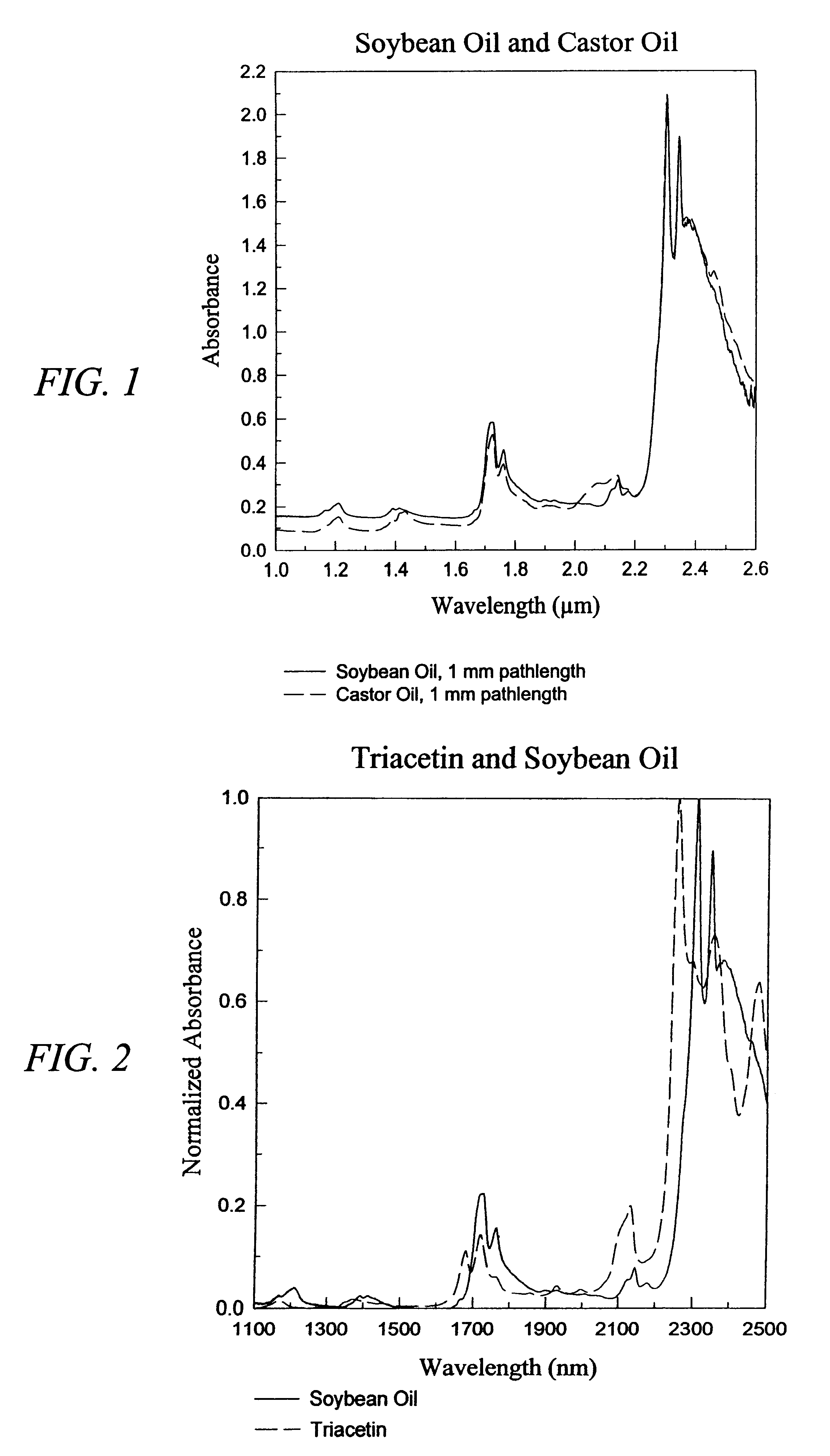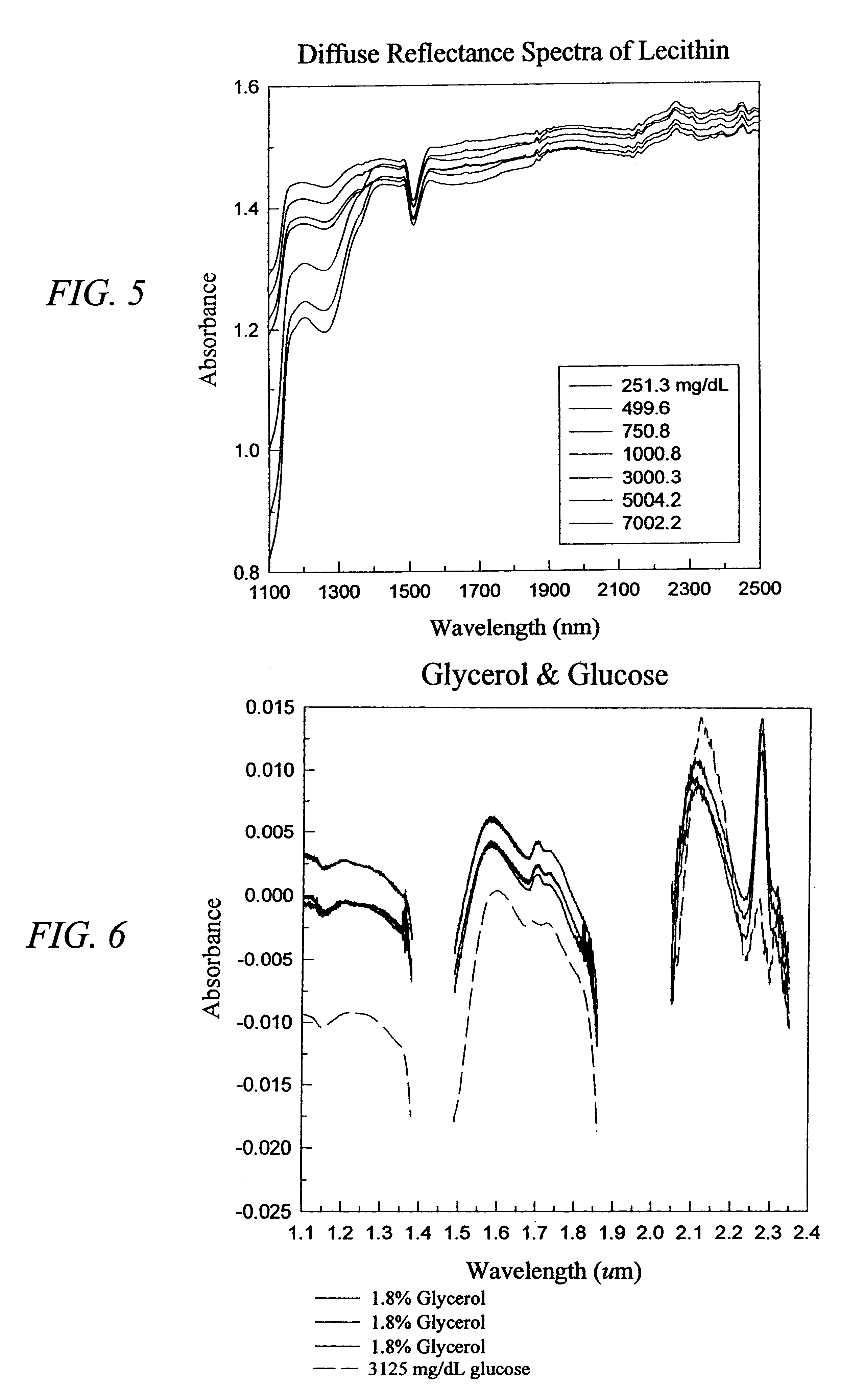Intra-serum and intra-gel for modeling human skin tissue
a skin tissue and gel technology, applied in the field of non-invasive spectroscopy, can solve the problems of complex interaction difficulty in deducing, and insufficient understanding of the relationship between the skin layer and the tissue layer,
- Summary
- Abstract
- Description
- Claims
- Application Information
AI Technical Summary
Problems solved by technology
Method used
Image
Examples
Embodiment Construction
Introduction
The preferred embodiment of the invention is the family of samples known collectively as Intra-serum. A near-IR diffuse reflectance spectrum of a human forearm is presented in FIG. 12 along with a diffuse reflectance spectrum of an Intra-serum sample. This Intra-serum sample was prepared with castor oil and has a bimodal particle size distribution with peaks centered at 0.4 and 3.0 .mu.m. The castor oil droplets are suspended in the aqueous solution with lecithin. The observed intensity in the 2.sup.nd overtone (1000 to 1450 nm), 1.sup.st overtone (1450 to 2000) and combination band (2000 to 2500) spectral regions of the human arm is closely modeled by the Intra-serum sample. In particular, water absorbance bands are observed in both at 1450, 1950 and 2600 nm. Fat absorbance bands are observed in both at 1167, 1210, 1391, 1413, 1724, 1760, 2123, 2144, 2347 and 2380 nm. As discussed below, the absorbance bands observed at 1188, 1512, 1734, 1740, 1940, 2174, 2288, 2294, 23...
PUM
| Property | Measurement | Unit |
|---|---|---|
| size | aaaaa | aaaaa |
| particle size distribution | aaaaa | aaaaa |
| particle size distribution | aaaaa | aaaaa |
Abstract
Description
Claims
Application Information
 Login to View More
Login to View More - R&D
- Intellectual Property
- Life Sciences
- Materials
- Tech Scout
- Unparalleled Data Quality
- Higher Quality Content
- 60% Fewer Hallucinations
Browse by: Latest US Patents, China's latest patents, Technical Efficacy Thesaurus, Application Domain, Technology Topic, Popular Technical Reports.
© 2025 PatSnap. All rights reserved.Legal|Privacy policy|Modern Slavery Act Transparency Statement|Sitemap|About US| Contact US: help@patsnap.com



